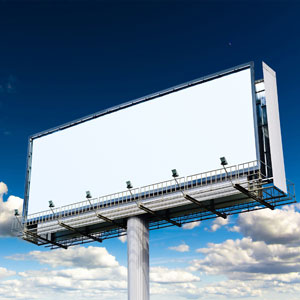
A Quick History of the Highway Beautification Act
The billboard industry has a rich history of how it evolved to the modern-day. Over the past several decades, the U.S. government created various acts to limit the number of billboards and create size, lighting, and spacing regulations. These aspects vary by state, so there are no federal billboard regulations.
The first regulations implemented by the U.S. government were within the Bonus Act of the 1958 Federal Highway Act. The Bonus Act was a voluntary program that incentivized controlling billboards within 660 feet of the Interstate Highway System. States that volunteered to the program would receive one-half of one percent of the Federal-aid highway construction costs for all controlled segments of Interstate highways. Billboards were controlled by the Bonus Act along the interstate highways for years until the passage of the Highway Beautification Act that led to other provisions.
The Highway Beautification Act was signed in 1965 with agreements being carried out from 1967 up until 1972. This act was created for scenic enhancement and roadside development. It called for further billboard control like sizing, lighting, and spacing agreements along with the removal of certain types of signs. While this act called for more restrictions on outdoor advertising, it actually didn’t fully achieve all it had planned. Few billboard removals actually occurred since the government only provided a small portion of the funds it promised. Additionally, since the government was required to fully compensate for any removals, more billboards were bought right before agreements were enacted as businesses realized they couldn’t lose out on these new investments. Lastly, this act resulted in billboards larger than before which were strategically placed outside the restricted radius created under the act.
Today, billboards are monitored and regulated by each state’s Department of Transportation. Each Department of Transportation is responsible for tasks like specifying the types of signs that may be placed on state highways, issuing permits for billboards, and enforcing restrictions. Across states, the majority of spacing requirements between billboards call for at least 500 foot spacing on the interstate, 300 feet outside of cities, and 100 feet inside cities. Although the Highway Beautification Act didn’t fully carry out all it intended to, it still created the necessary guidelines to be followed by those placing, buying, and designing billboards.
Simplify your ad campaign process by using BillboardsIn.com!

